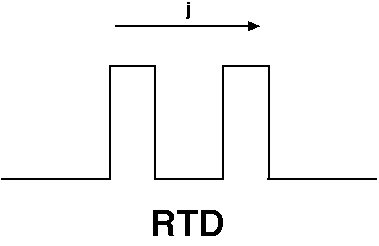The Wigner-function approach to quantum electron transport in semiconductors is
widely used to describe the
properties of electronic devices such as the Resonant Tunneling Diode (RTD)
and others. By making use of phase space concepts, it presents a close
analogy to the classical Boltzmann-equation approach; this has the advantage
that many of the analytical and numerical techniques commonly used
for the Boltzmann equation can be adapted to the Wigner
function. In particular, the numerical complexity of other quantum statistical
approaches to electron transport, such as the density-matrix approach
and the Green's-function approach,
is significantly reduced in the kinetic models that make use of the Wigner
function. Also, when dealing with space
dependent problems in finite domains, it is always difficult to devise the
correct boundary conditions to be imposed; because of the analogy
with the classical Boltzmann equation, this difficulty is more easily
overcome with the Wigner-function approach, since one can rely on
imposing classical boundary conditions in a region sufficiently far
from the quantum region, where classical effects dominate.
Also, adding collisions to the model
equations that govern the evolution of the Wigner function is less
complicated than including collisions into the other
statistical models of quantum transport.
All existing transport models for semiconductors based on the Wigner function, however,
rely on the following two approximations:
1) that only single-conduction-band electrons contribute to the current flow, and
2) that only a small region of the Brillouin zone near the minimum of
the band is
populated, leading to the parabolic band approximation.
Under these conditions, conduction electrons can be considered as
semiclassical particles
having an effective mass related to the curvature of the energy band
function near the minimum. The evolution equation for the Wigner function
of the conduction electrons then becomes the evolution equation for free
particles with an effective mass. This allows the inclusion of any
fields (barriers or bias) by means of the standard pseudodifferential
operator.
In the case of devices in which interband transitions or
non-parabolicity effects may occur, the single-band, effective mass
approximation is not satisfactory. A correctly defined Wigner
function for these phenomena should include the
populations of all bands involved in the
transport processes and the evolution equation that governs the time
dependence of the Wigner function should take into account
possible non-parabolicity effects.



